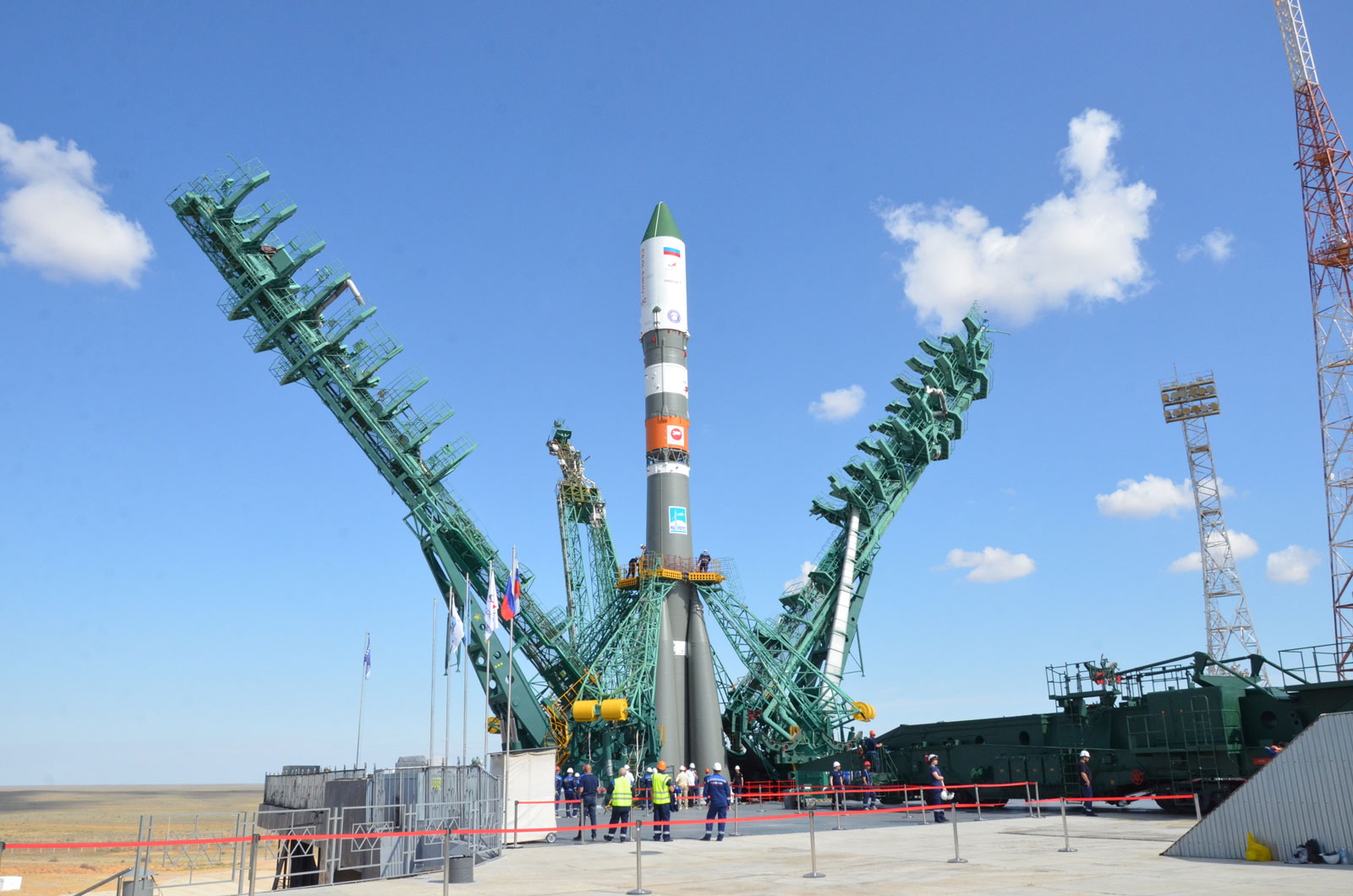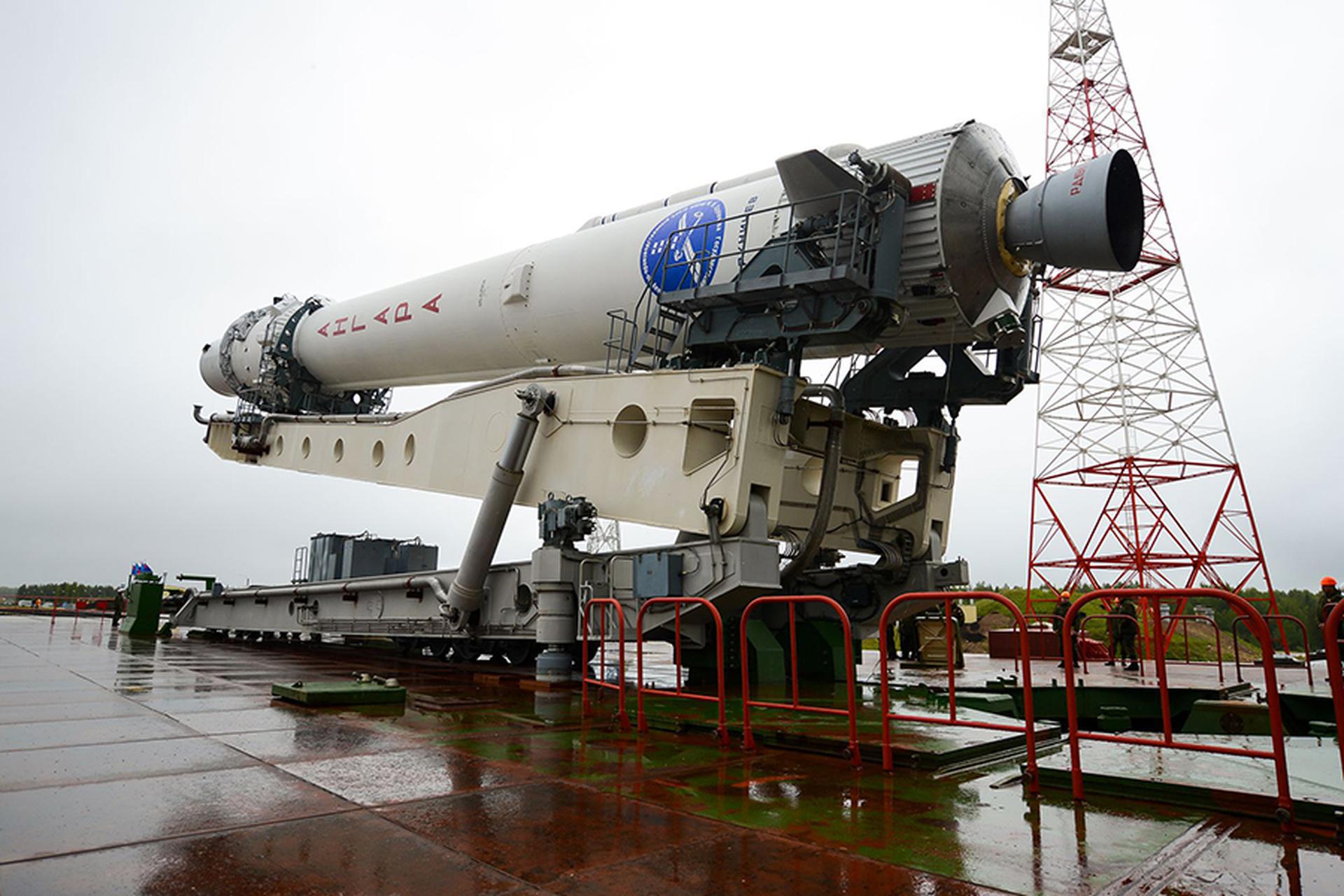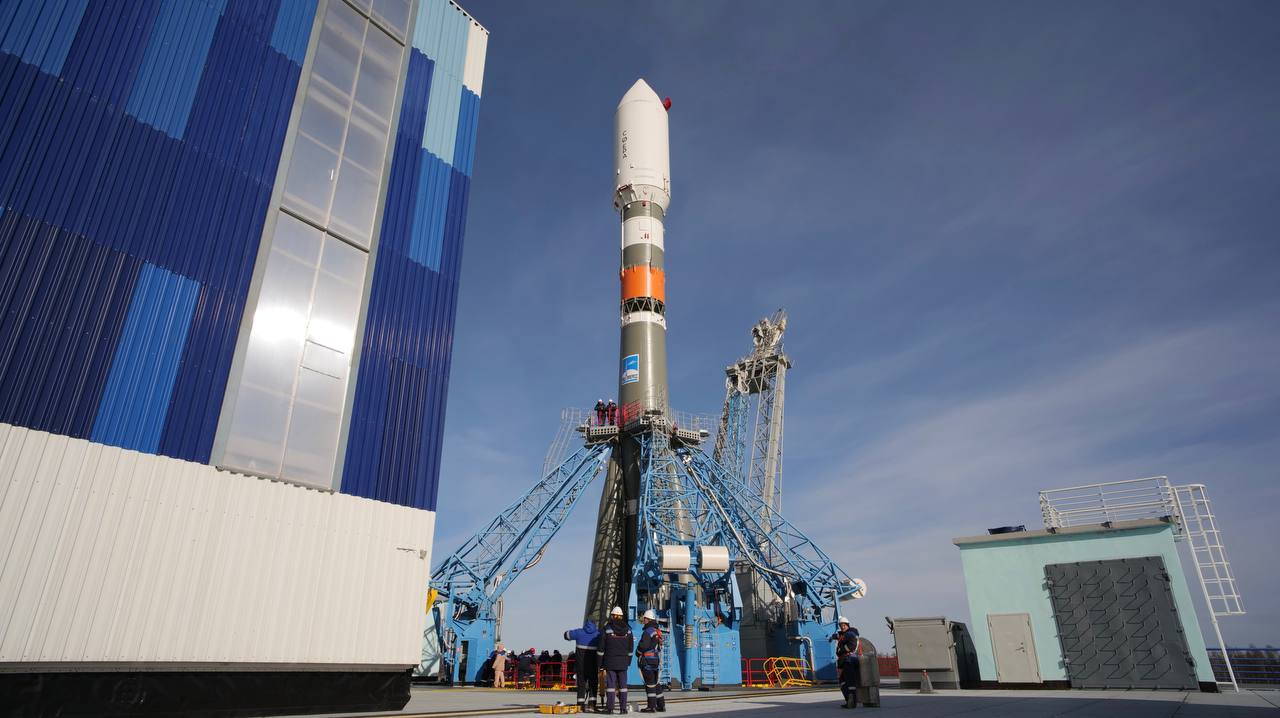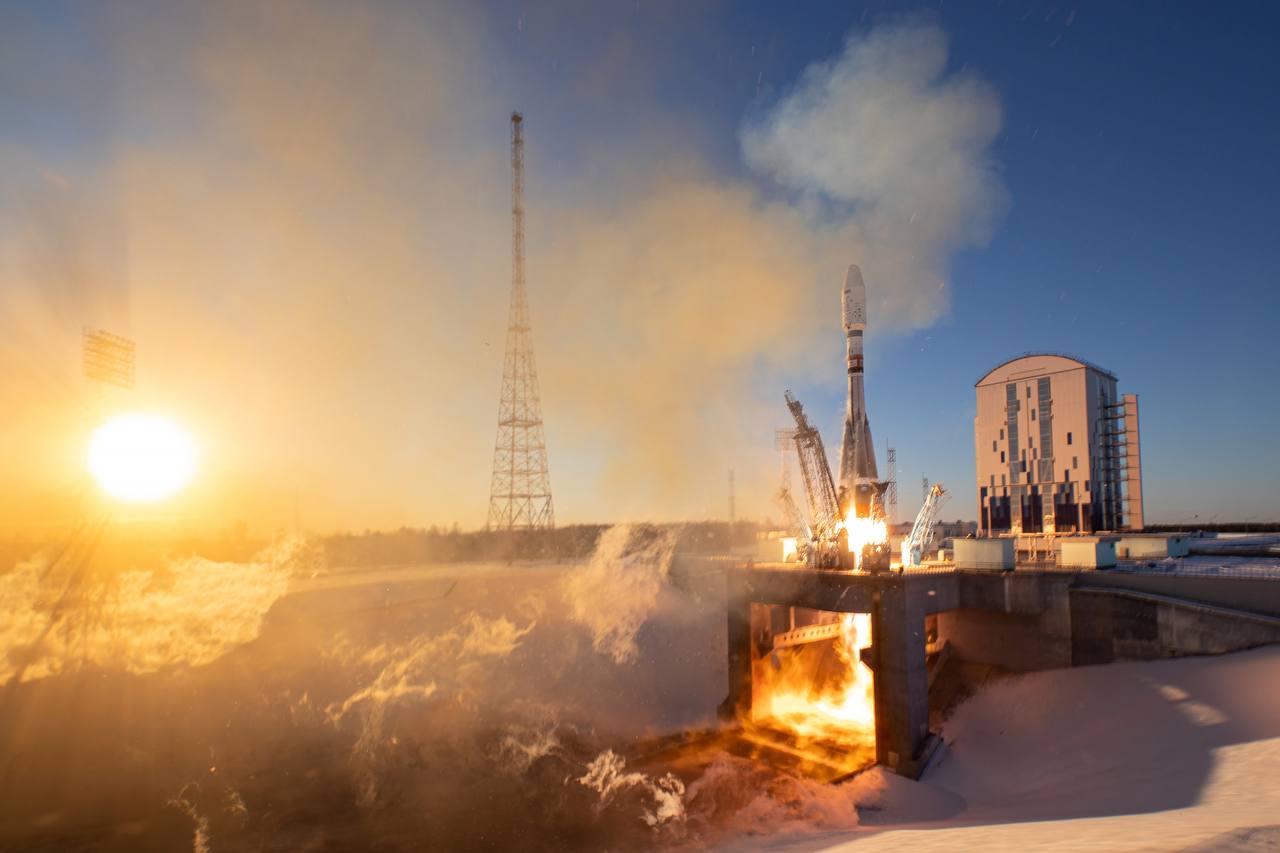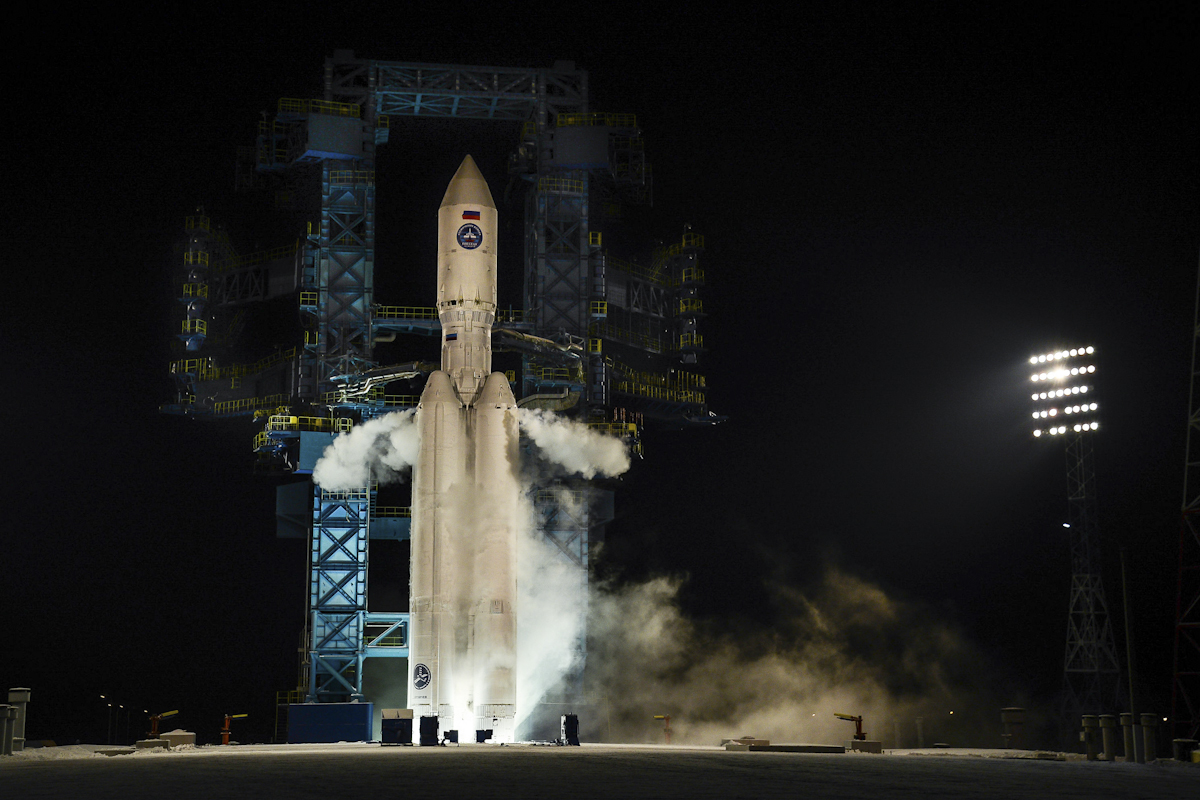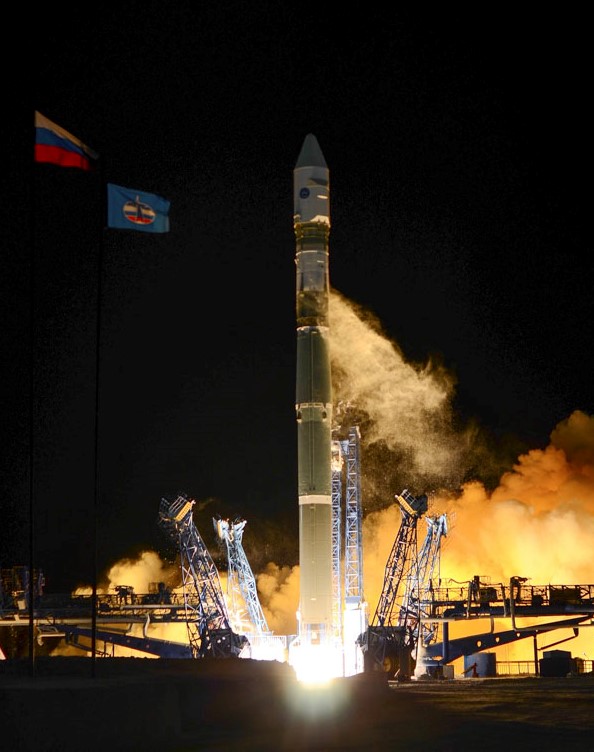Previous Spaceflight Launches
Filter by Agency, Locations or Vehicles
Show All LaunchesSoyuz 2.1a | Obzor-R No.1
Progress Rocket Space Center | RussiaPlesetsk Cosmodrome, Russian Federation
Dec. 25, 2025, 2:11 p.m.
Status: Launch Successful
Mission:
Note: Assignment of payloads to this launch is uncertain. The Russian Obzor-R satellite is a planned X-band radar earth observation satellite designed by TsSKB-Progress. In 2012, the development of the Arkon-2M radar satellite was stopped and instead the development of the Obzor-R was initiated. The satellite features the BRLK X-band Synthetic Aperture Radar as the imaging instrument with a ground resolution of 500 m.
Sun-Synchronous OrbitAngara 1.2 | 3 x Rodnik (Kosmos 2597, 2598, 2599)
Khrunichev State Research and Production Space Center | RussiaPlesetsk Cosmodrome, Russian Federation
Nov. 25, 2025, 1:42 p.m.
Status: Launch Successful
Mission:
Note: Payload identity and Cosmos series numbering not confirmed. The Strela (Russian: Стрела) are Soviet, then Russian, military space telecommunication satellites, in use since 1964. These satellites operate as mailboxes ("store-and-forward"): they remember the received messages and then resend them after the scheduled time, or by a command from the Earth. They can serve for up to five years. The satellites are used for transmission of encrypted messages and images. The operational constellation consists of 12 satellites in two orbital planes, spaced 90° apart. The spacecraft had a cylindrical body with a gravity-gradient boom, which was extended on-orbit to provide passive attitude stabilization. On-board storage was 12 Mbits of data, with a transmission rate of 2.4 kbit/s. The first three satellites were launched in 1964 by a Cosmos launcher. After one year of service, new and improved satellites were launched, called Strela-2. In 1970, these satellites were modernized, and became the Strela-1M and Strela-2M satellites. From 1985, these satellites will be gradually replaced by Strela-3, and then by Strela-3M from 2005. A civilian version of these satellites was created, called Goniets. Initially they were launched in groups of six on Tsyklon; when the launcher was retired, they were only launched by two on Cosmos, before Rokot was put into service and allowed the sending of triplets of Strela satellites.
Low Earth OrbitSoyuz 2.1b/Fregat | Glonass-K1 No. 18 (Kosmos 2595) & Kosmos 2596
Progress Rocket Space Center | RussiaPlesetsk Cosmodrome, Russian Federation
Sept. 13, 2025, 2:10 a.m.
Status: Launch Successful
Mission:
Glonass-K1 are the third generation of satellite design for GLONASS satellite navigation system. GLONASS is a Russian space-based navigation system comparable to the similar GPS and Galileo systems. This generation improves on accuracy, power consumption and design life. Each satellite is unpressurized and weighs 935 kg, and has an operational lifetime of 10 years. This launch also carries Mozhayets-6 (Kosmos 2596), a small experimental satellite built by the Mozhaiskiy Military Space Academy of St. Petersburg.
Medium Earth OrbitAngara 1.2 | Kosmos 2591-2594
Khrunichev State Research and Production Space Center | RussiaPlesetsk Cosmodrome, Russian Federation
Aug. 21, 2025, 9:32 a.m.
Soyuz 2.1b/Fregat-M | Ionosfera-M 3 & 4
Progress Rocket Space Center | RussiaVostochny Cosmodrome, Siberia, Russian Federation
July 25, 2025, 5:54 a.m.
Status: Launch Successful
Mission:
Ionosfera is a constellation of four ionospheric and magnetospheric research satellites developed by for Roscosmos for the project Ionozond. The satellites will operate on circular sun-synchronous orbits (SSO), at altitude of about 800 km and located in two orbital planes of two satellites each. The following science instruments are carried on the satellites: * SPER/1 Plasma and energy radiation spectrometer * SG/1 Gamma-ray spectrometer * GALS/1 Galactic cosmic ray spectrometer / 1 * LAERTES On-board Ionosonde * NBK/2 Low-frequency wave complex * ESEP Ionospheric plasma energy spectrometer * Ozonometer-TM Ozonometer * MayaK On-board radio transmitters * PES GPS-GLONASS device
Sun-Synchronous OrbitAngara A5/Briz-M | Kosmos 2589 & 2590
Khrunichev State Research and Production Space Center | RussiaPlesetsk Cosmodrome, Russian Federation
June 19, 2025, 3:01 a.m.
Soyuz 2.1b/Fregat-M | Kosmos 2588
Progress Rocket Space Center | RussiaPlesetsk Cosmodrome, Russian Federation
May 23, 2025, 8:36 a.m.
Angara 1.2 | 3 x Rodnik (Kosmos 2585, 2586, 2587)
Khrunichev State Research and Production Space Center | RussiaPlesetsk Cosmodrome, Russian Federation
March 16, 2025, 10:49 a.m.
Status: Launch Successful
Mission:
Note: Payload identity and Cosmos series numbering not confirmed. The Strela (Russian: Стрела) are Soviet, then Russian, military space telecommunication satellites, in use since 1964. These satellites operate as mailboxes ("store-and-forward"): they remember the received messages and then resend them after the scheduled time, or by a command from the Earth. They can serve for up to five years. The satellites are used for transmission of encrypted messages and images. The operational constellation consists of 12 satellites in two orbital planes, spaced 90° apart. The spacecraft had a cylindrical body with a gravity-gradient boom, which was extended on-orbit to provide passive attitude stabilization. On-board storage was 12 Mbits of data, with a transmission rate of 2.4 kbit/s. The first three satellites were launched in 1964 by a Cosmos launcher. After one year of service, new and improved satellites were launched, called Strela-2. In 1970, these satellites were modernized, and became the Strela-1M and Strela-2M satellites. From 1985, these satellites will be gradually replaced by Strela-3, and then by Strela-3M from 2005. A civilian version of these satellites was created, called Goniets. Initially they were launched in groups of six on Tsyklon; when the launcher was retired, they were only launched by two on Cosmos, before Rokot was put into service and allowed the sending of triplets of Strela satellites.
Low Earth OrbitSoyuz 2.1b/Fregat-M | Glonass-K2 No. 14 (Kosmos 2584)
Progress Rocket Space Center | RussiaPlesetsk Cosmodrome, Russian Federation
March 2, 2025, 10:22 p.m.
Status: Launch Successful
Mission:
Glonass-K2 are the fourth generation of satellite design for GLONASS satellite navigation system. GLONASS is a Russian space-based navigation system comparable to the similar GPS and Galileo systems. This generation improves on accuracy, power consumption and design life. Each satellite is unpressurized and weighs 1645 kg, and has an operational lifetime of 10 years.
Medium Earth OrbitSoyuz 2.1v/Volga | Kosmos 2581/2582/2583
Progress Rocket Space Center | RussiaPlesetsk Cosmodrome, Russian Federation
Feb. 5, 2025, 3:59 a.m.
